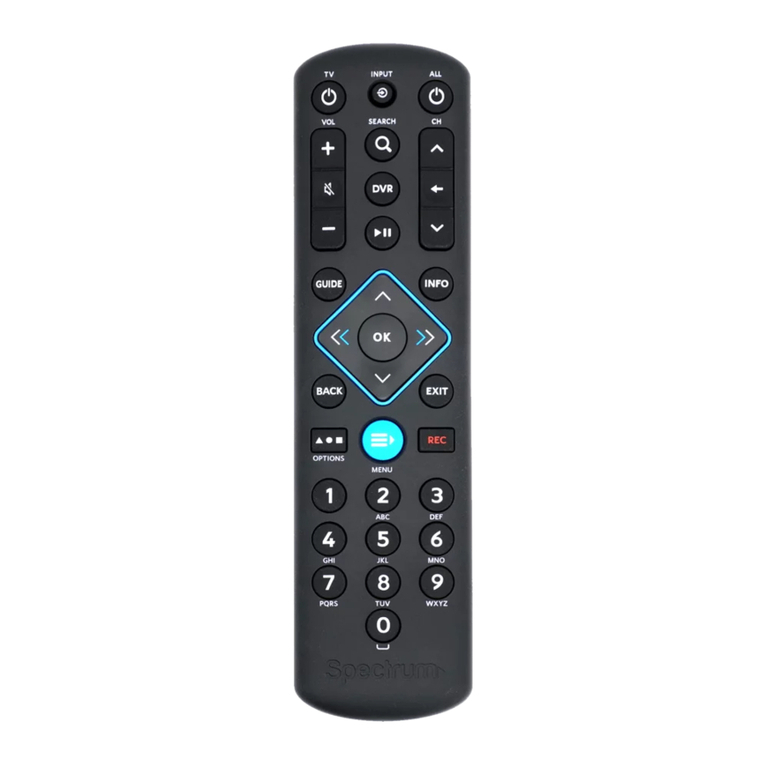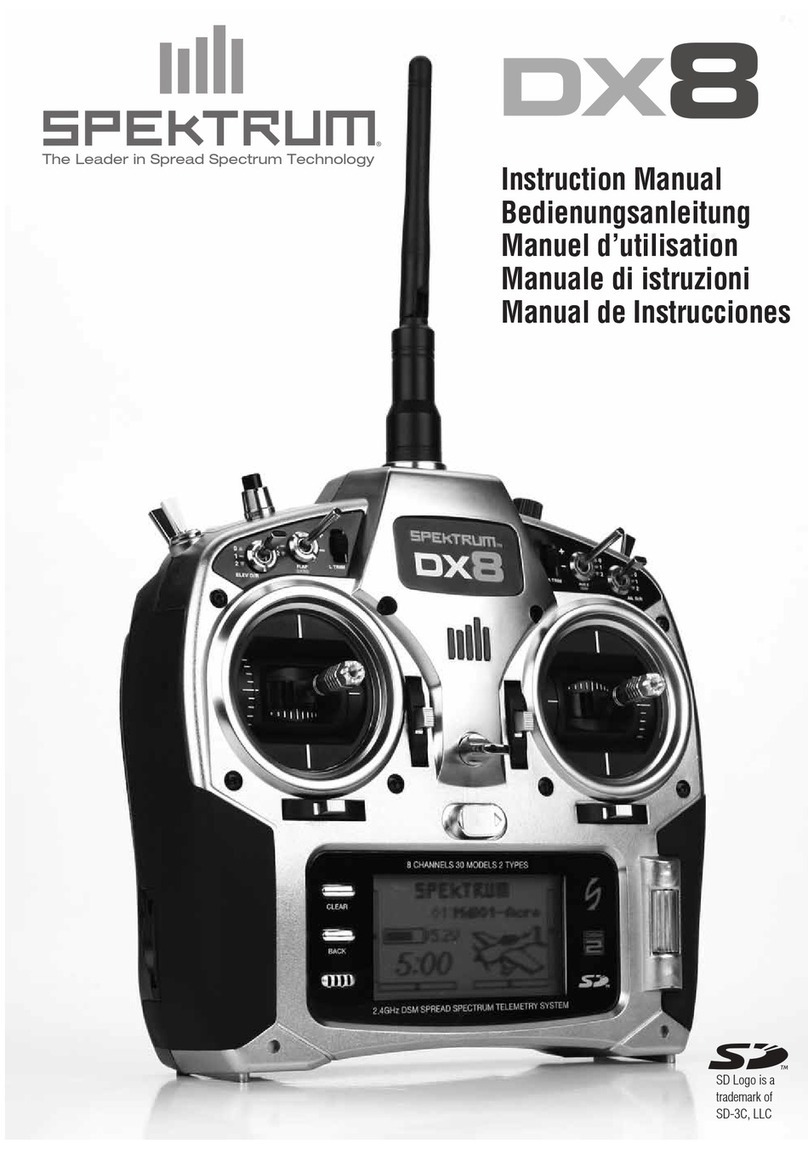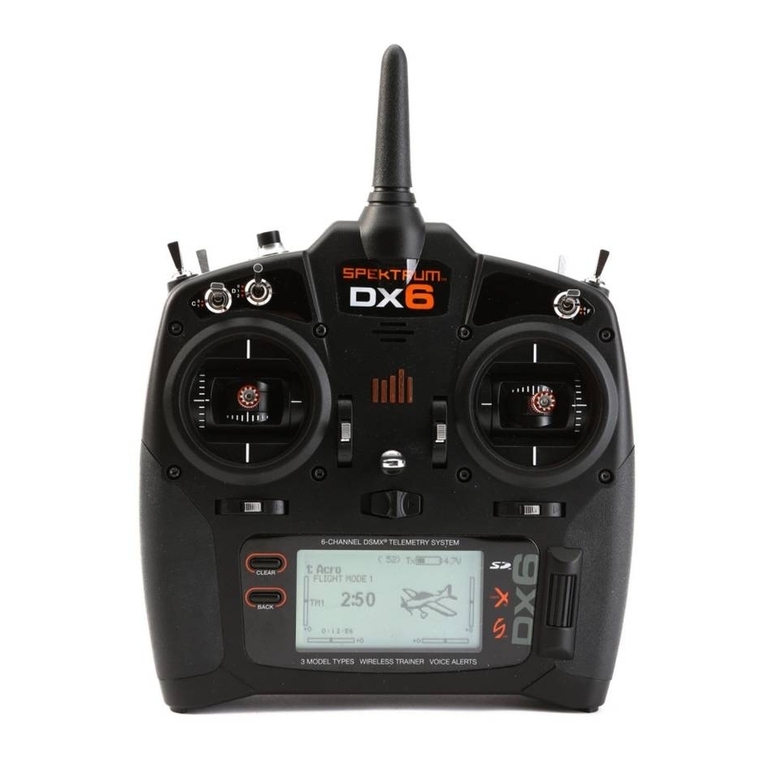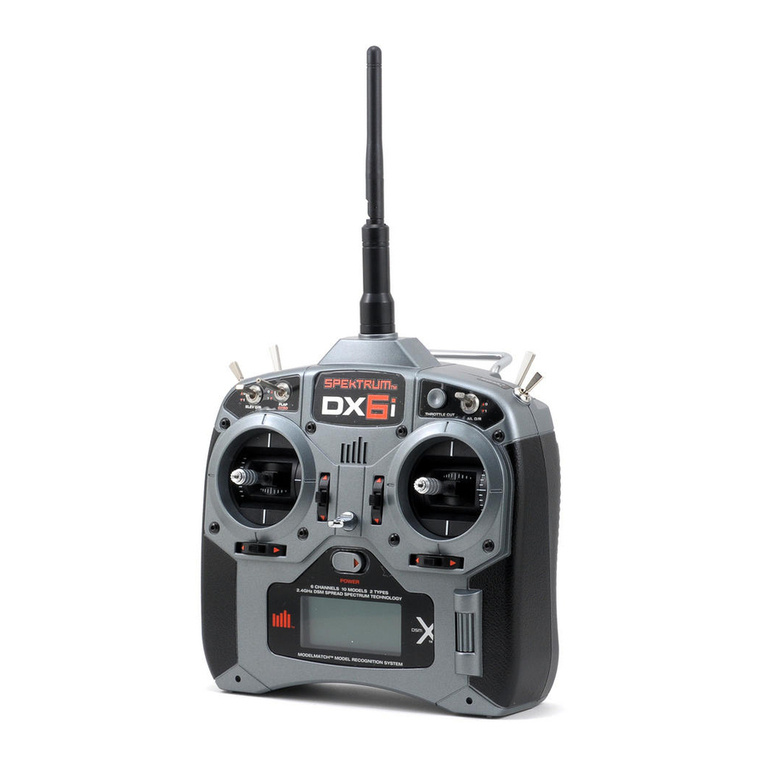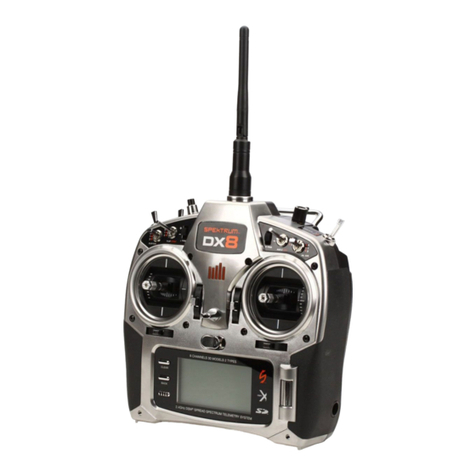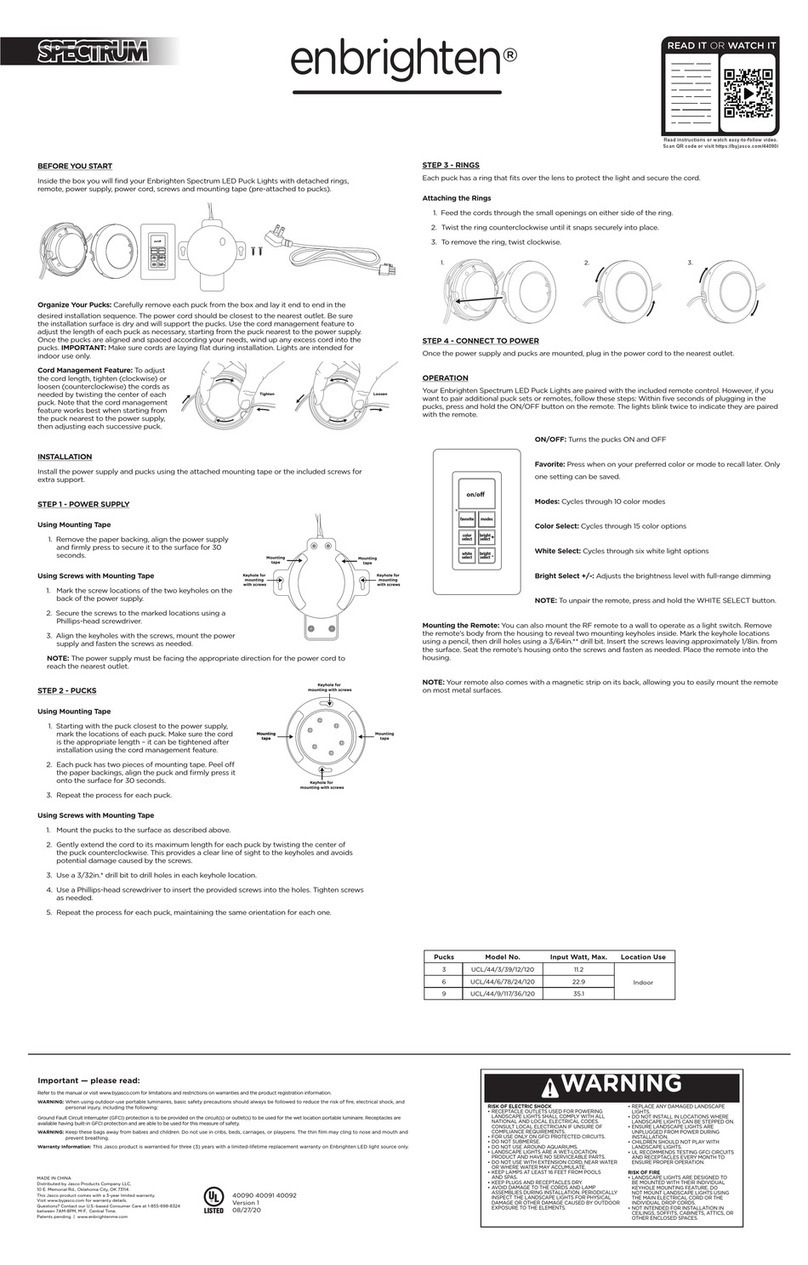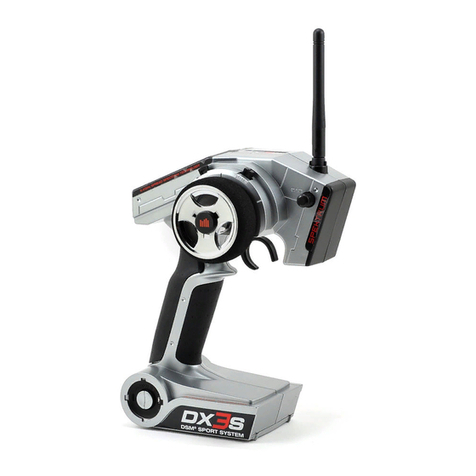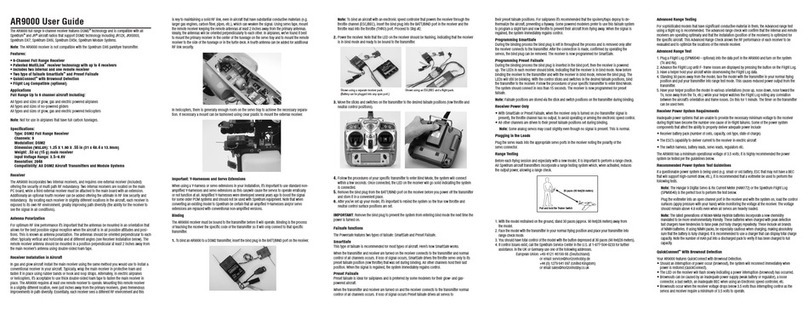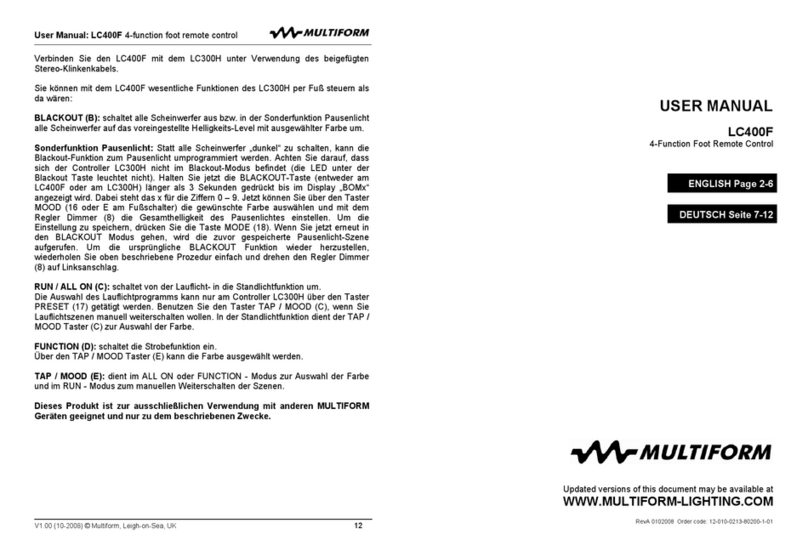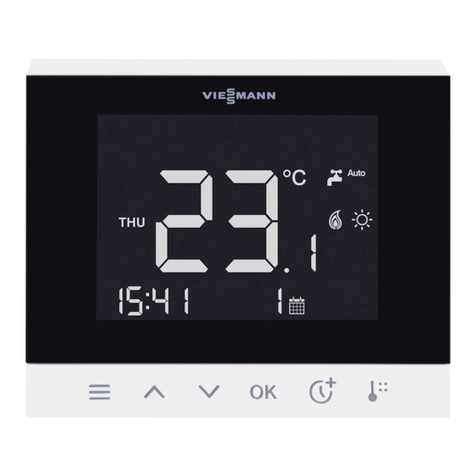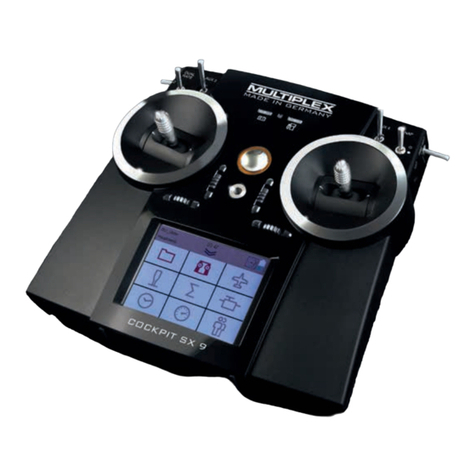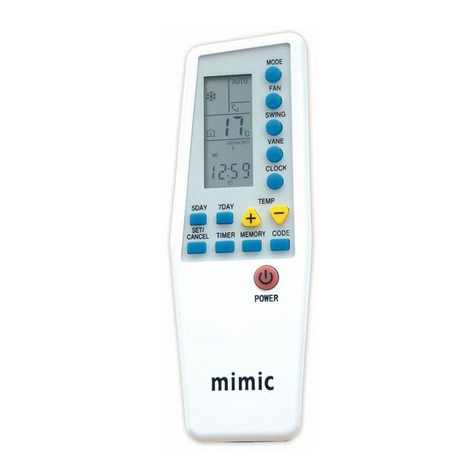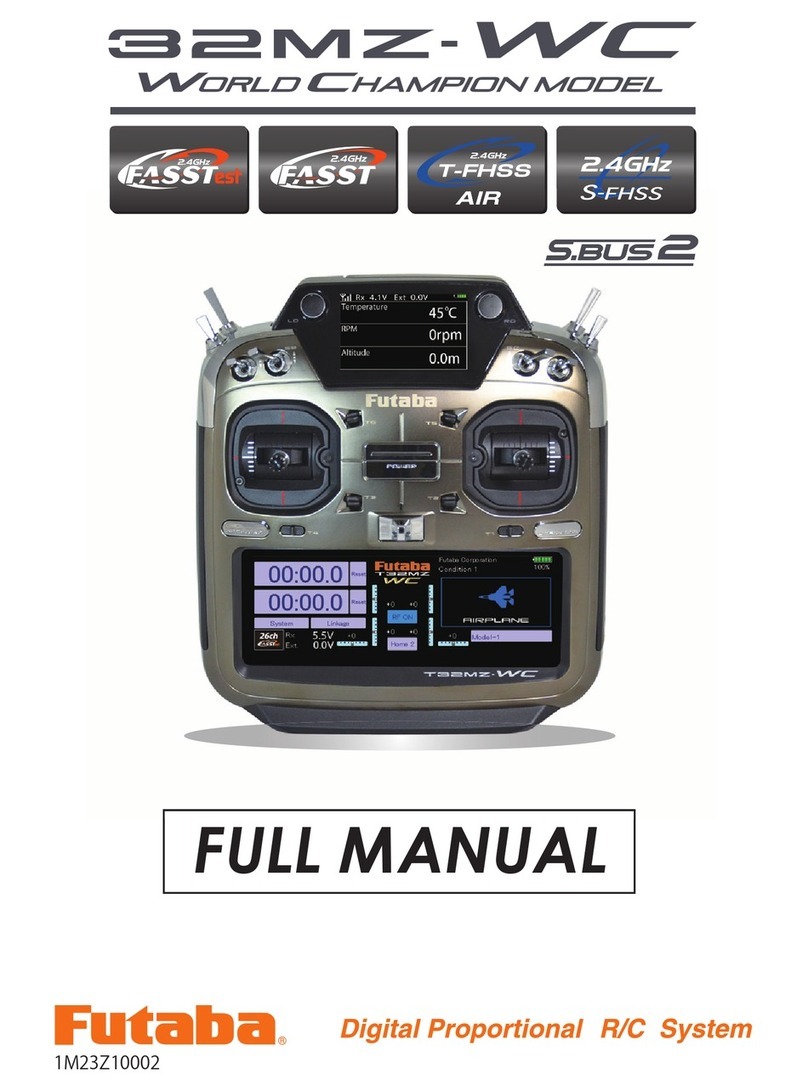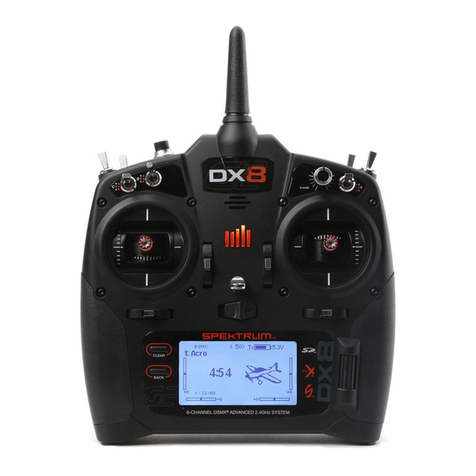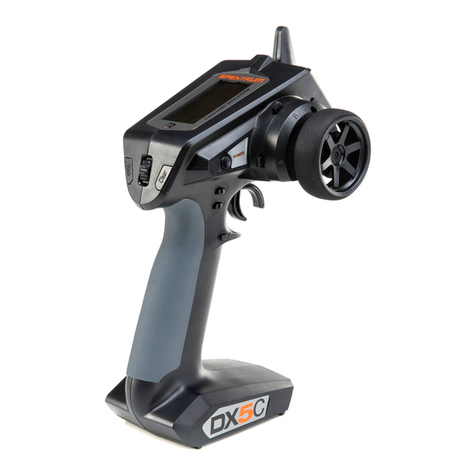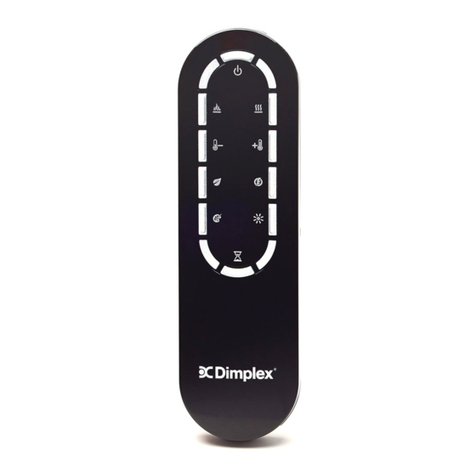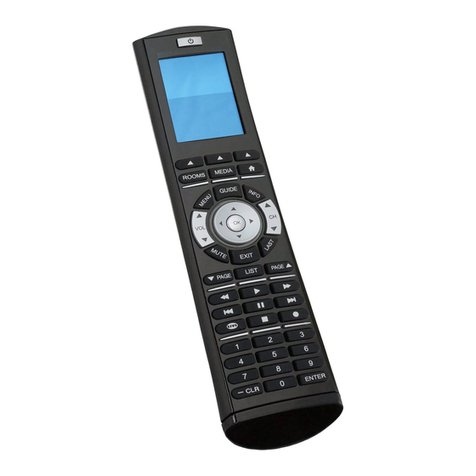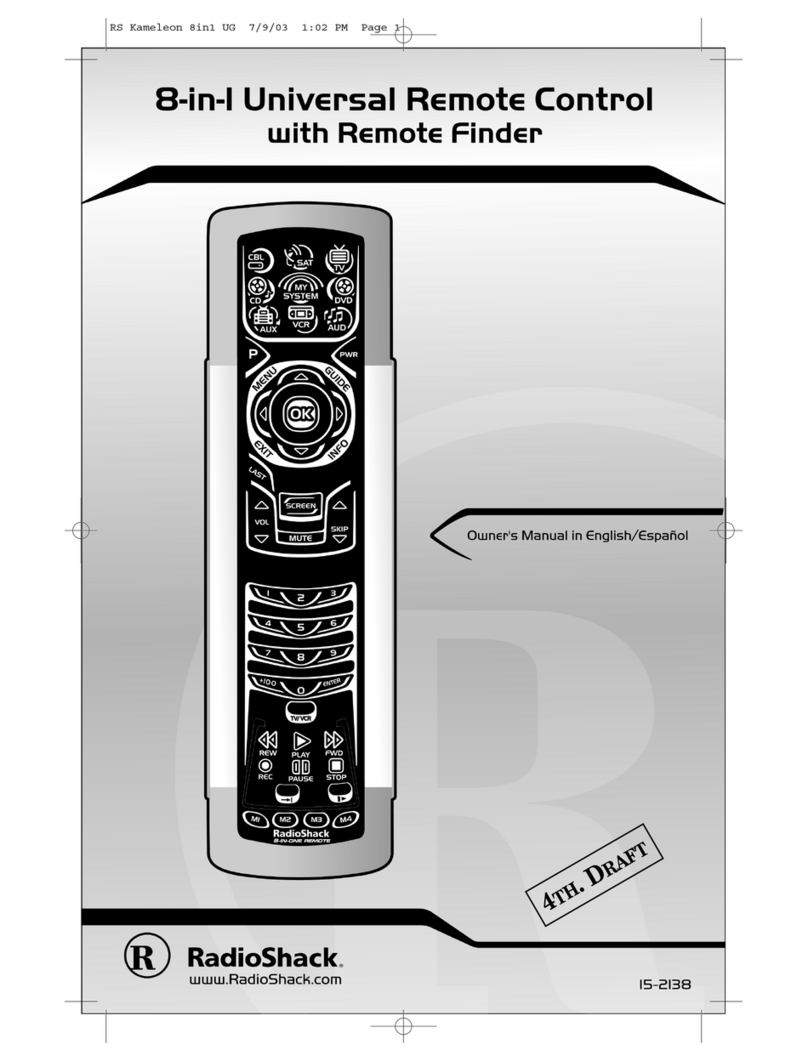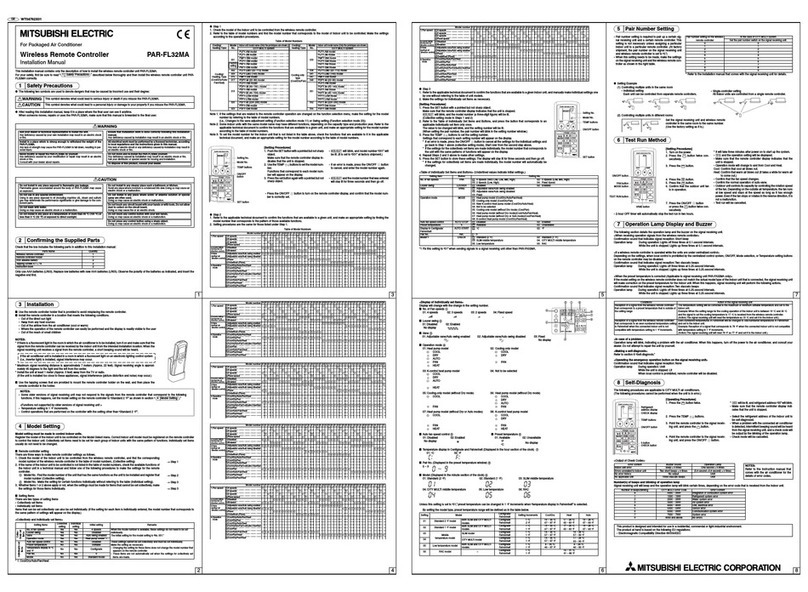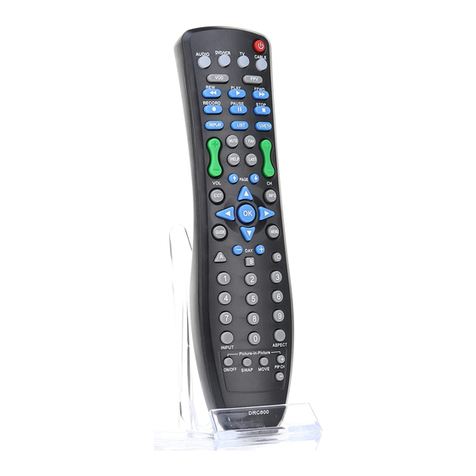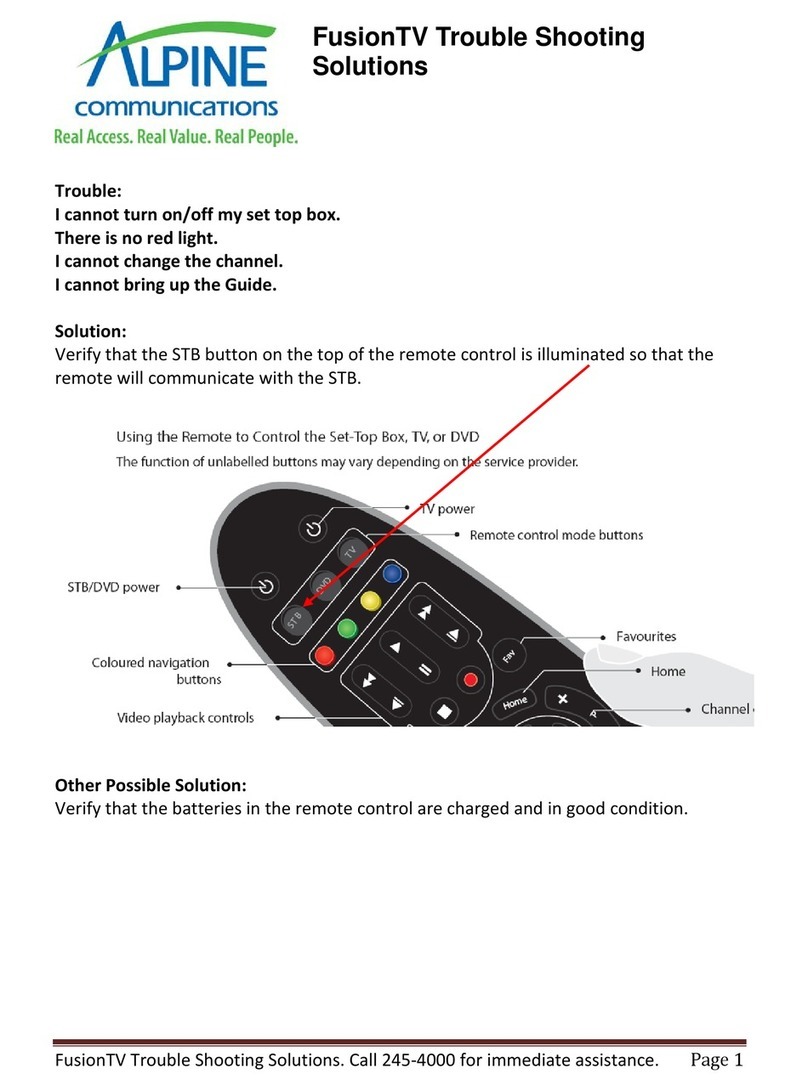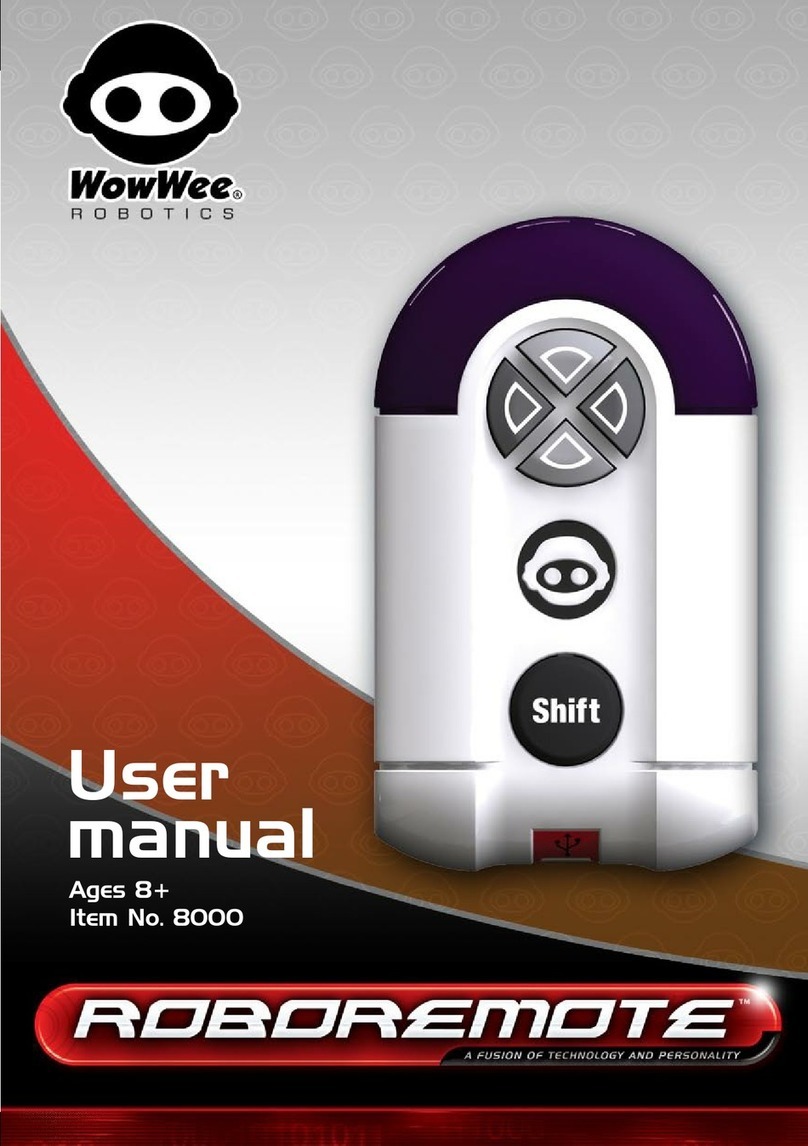
MUG1160S-A1 Page 4
Problem: My remote won’t pair with my Cable Box
Solution: Ensure that you have a Charter WorldBox
Ensure that the remote has a clear line of sight to the Cable Box when pairing
Be sure to follow the on-screen instructions that appear when pairing
Remote Key Chart
Show image of the whole remote control with lines pointing to each key or key group for the description
below.
TV POWER Used to turn on the TV
INPUT Used to switch video inputs on your TV
ALL POWER Used to turn on the TV and set-top box
VOLUME +/- Used to change volume level on TV or Audio Device
MUTE Used to mute volume on TV or STB
SEARCH Used to search for TV, Movies, and other content
DVR Used to list your recorded programs
PLAY/PAUSE Used to play and pause current selected content
CH +/- Used to cycle through channels
LAST Used to jump to the previous tuned channel
GUIDE Used to display the program guide
INFO Used to display selected program info
NAVIGATION UP, DOWN, LEFT, RIGHT Used to navigate on-screen content menus
OK Used to select on-screen content
BACK Used to jump to previous menu screen
EXIT Used to exit the current displayed menu
OPTIONS Used to select special options
MENU Used to access main menu
REC Used to record current selected content
DIGITS Used to enter channel numbers
Declaration of Conformity
Federal Communication Commission Interference Statement
This equipment has been tested and found to comply with the limits for a Class B digital device, pursuant to Part 15 of the FCC Rules. These
limits are designed to provide reasonable protection against harmful interference in a residential installation. This equipment generates, uses, and
can radiate radio frequency energy and, if not installed and used in accordance with the instructions, may cause harmful interference to radio
communications. However, there is no guarantee that interference will not occur in a particular installation. If this equipment does cause harmful
interference to radio or television reception, which can be determined by the turning of equipment off and on, the user is encouraged to try to
correct the interference by one of the following measures:
• Reorient or relocate the receiving antenna.
•Increase the separation between the equipment and receiver.
• Consult the dealer or an experienced radio/TV technician for help.
• Connect the equipment into an outlet on a circuit different from that to which the receiver is connected.
This device complies with Part 15 of the FCC Rules. Operation is subject to the following two conditions: (1) This device may not cause harmful
interference, and (2) this device must accept any interference received, including interference that may cause undesired operation. The user is
cautioned t that the changes and modification made to the equipment without the approval of manufacturer could void the user's authority to
operate this equipment.
